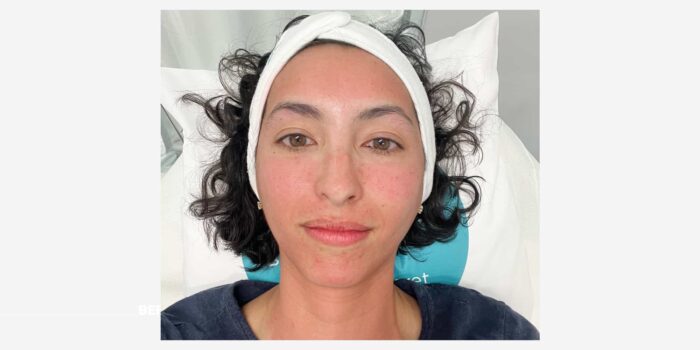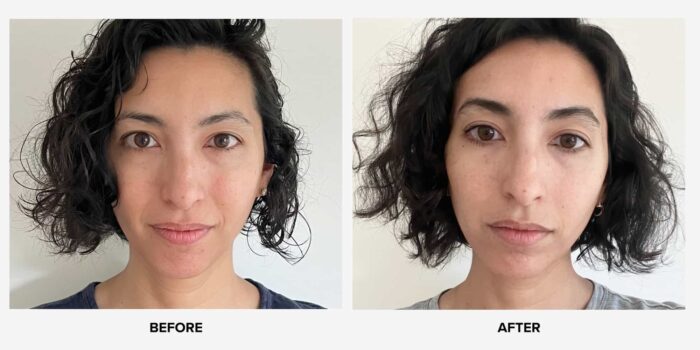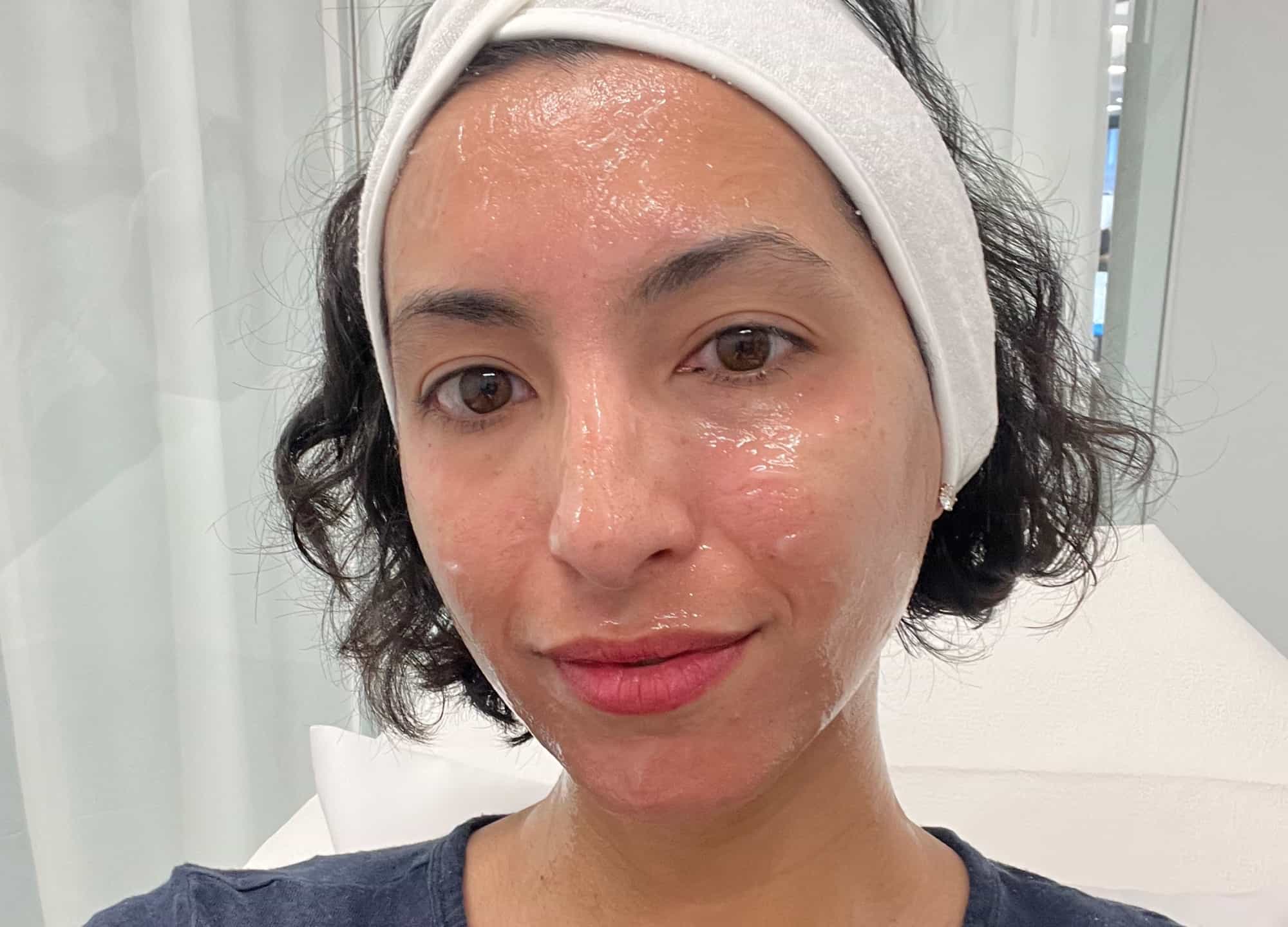My skin hasn’t been the same since I had a baby last year. Not only did I deal with pregnancy acne, with breakouts that put my usual hormonal acne to shame, but in the months postpartum, my skin—naturally oily, prone to hyperpigmentation, and with pores you can see from outer space—gave rise to errant skin tags, uneven texture, and mottled skin tone. And don’t even get me started on my wrinkles, which settled into my forehead and my outer-eye areas while I went on a Botox hiatus. In summary: I’m experiencing the effects of aging, sun damage, my genetic predisposition to acne, and sleep loss all at once, and it’s not cute.
So given the opportunity to try not one but two devices—as is the case with Cutera’s new Secret Duo Treatment—I couldn’t pass it up. The treatment features Secret RF microneedling—which pairs controlled injuries via microneedle using radiofrequency energy—with the Secret Glow, a non-ablative laser. You can opt for either treatment or to pair them in a single appointment, and I went for the latter.
When it comes to in-office treatments, I tend to be a minimalist; I’ve tried neuromodulators, Clear + Brilliant, and laser hair removal. These are all procedures that tend to be quick, generally comfortable, or a nice combination of both. So I was apprehensive about the prospect of pairing laser resurfacing with microneedling, but the state of my skin—and the assurance that I would be very well numbed ahead of time—made me more comfortable with it.
What Secret Duo treatment prep entails
I arrived at the office 30 minutes ahead of the appointment to sit with numbing cream on my face and neck and meet Dr. Mira Kaga, a board-certified internist in Marlboro, New Jersey. Off the bat, I was comforted knowing that the laser would be safe for my skin tone, which is a Fitzpatrick V—for which some lasers aren’t an option, due to an increased risk of hyperpigmentation. Plus the Secret RF microneedling device has needles that are coated in gold. Not only does the gold conduct energy well, but—along with the smooth motor application—it also “allows the needles to glide in and out of skin, with minimal tugging or friction,” she said.
“You’ll see the results right after, but they’ll be even better in six weeks,” said Dr. Kaga, who recommends this interval between sessions for that reason. “That gives the new collagen time to form.”
The combination of RF microneedling and this nonablative laser can work to promote new collagen production, smoothing fine lines and improving the look of acne scars. Plus, Dr. Kaga told me, it could also help with some of the acne scarring around my cheeks and chin.
The Secret Duo treatment process
After I was fully numbed up, Dr. Kaga’s assistant, Taylor, sanitized my face with an alcohol wipe and then got started with the microneedle. She worked in sections, beginning with my forehead and making her way to my nose, cheeks, chin, and then either side of my neck, repeating each section twice—for a total of three stamps—as she went. While that might sound brutal, each subsequent pass was more tolerable; that’s by design, since the needles don’t pierce quite as deeply, Taylor told me. (Their depth ranges from 0.3 mm to 3.5 mm, so it’s easy for your provider to customize the depth to your needs and comfort level.)
Then she repeated the entire process again. My forehead and hairline felt tender, while my neck was the most comfortable treatment area (a surprise to me). “The microneedling is the hard part,” Taylor told me. I was glad they led with it—like getting bad news first. While the numbing cream made it tolerable for me, a person who’ll pass out at the sound of an IV being unwrapped, I did tense up at certain points during the microneedling portion.
Next up was the Secret Glow, a non-ablative laser that works by heating the dermis and keeping the more superficial epidermis intact. Taylor started down by my neck, working her way to my forehead.
While the pulses—which felt like quick spurts of heat—didn’t hurt for most of my face and neck, those on my forehead felt rather spicy. She repeated this for a second pass, and by the time the laser reached my forehead, I had my eyes screwed shut and was doing deep breathing. (Then again, I’ve needed to drink apple juice to raise my blood sugar after getting Botox.) On the plus side, the entire laser treatment took a total of five minutes.
As soon as Taylor was done wielding the laser, she applied the Epicutis Lipid Recovery Mask, which cooled my skin immediately and dialed down the sting. After I sat with that on for 10 minutes, she slathered my skin in an exosome serum and topped it with SkinBetter Sunbetter Tone Smart SPF 75.
My Cutera Secret Duo treatment recovery

My recovery was a breeze in that there really was none. My face looked red in the immediate aftermath, as if I’d gotten a mild sunburn, but even that was effectively gone by the next day. (I also received no glances in public.) If anything, my skin just looked brighter. The only side effect of the procedure was redness and itchiness on my neck, which lasted about three days.
I stopped using retinoids for a few days, swapping in Plated Skin Science Intense Serum, which is powered by exosomes, for that and my usual vitamin C serum. It might not have been the best way to assess the true downtime of the two treatments, since exosomes supposedly encourage healing, but I was glad to have my skin entirely back to normal quickly.
The results of the Secret Duo Treatment

Following the procedure, my skin was noticeably brighter and smoother. My pores also didn’t look quite as large, especially on my nose. The only drawback is that about a week after the treatment, some zits popped up in odd (for me) places, like my forehead. Maybe it was skin purging—which can happen after both microneedling and laser resurfacing—or maybe it was bad luck.
Now, three weeks out from the treatment, I see an improvement in the evenness of my skin tone (save for a new dark spot following a zit), and much smoother skin, especially on my cheeks. The results are subtler than I’d hoped, but Dr. Kaga emphasized that two or three treatments really yield the best outcome. The good news is that I’m much more comfortable with getting it again, since I know what to expect in terms of pain, recovery, and results.











